Moto X Review
by Brian Klug on August 26, 2013 1:30 PM EST- Posted in
- Smartphones
- Qualcomm
- MSM8960
- Motorola
- Android
- Mobile
- Android 4.2
- Moto X
CPU Performance
by Brian Klug & Anand Shimpi
I already touched on it, but inside Moto X is Motorola’s X8 Mobile Computing System, which consists of a 1.7 GHz Qualcomm Snapdragon S4 Pro MSM8960Pro SoC with two Krait 300 CPUs running at 1.7 GHz alongside Adreno 320 graphics. The two other parts are a TI MSP430 for sensor fusion and active display and a TI C55x DSP for voice activation. There’s a total of 8 “cores” in there, which is where the 8 in X8 comes from, but beyond that there’s no getting around the fact that there’s an 8960Pro inside the Moto X responsible for actually powering the OS.
The elephant in the room is of course the fact that Motorola has gone to great lengths to both avoid talking about the dual core SoC, but instead wants to talk about its “8-core system”, which is curious, since it simultaneously plays its dual core SoC choice as a strength. There was nothing wrong with 8960, it was a great SoC and appeared in countless flagship phones in 2012, and its respin with 8960Pro presents a number of good upgrades. Qualcomm’s 8960Pro includes Krait 300 instead of 200, bringing a jump in clocks from 1.5 to 1.7 GHz and higher IPC at the same time, and the Adreno 225 graphics are out and replaced with Adreno 320 which is considerably faster and OpenGL ES 3.0 compatible. 8960Pro is fine, but it’s an SoC just short of high end even by Qualcomm’s own roadmaps, even though the Moto X is positioned and priced at launch like a high end phone.
“Why would anyone pay $199 when they can get latest SoC-based gear for that much.”
That’s the question which was posed to me, rather eloquently, by another AnandTech editor. I found myself wondering the same thing when I heard the $199 on-contract pricing at the Moto X announcement. Given prior information about the Moto X including an 8960Pro, I assumed a different price point entirely than the usual, and still expect it to come down in price rather quickly. There’s obviously more to a device than just what silicon is inside, but this is the performance section after all. Trading off two CPU cores for integrated modem with 8960Pro does likely help Motorola to make a smaller device and spend less money on silicon, it’s ultimately a tradeoff.
If we look at SunSpider, Octane and Kraken, you wouldn’t be able to tell that the Moto X used a dual-core Krait 300 vs. a quad-core offering. In all three benchmarks the Moto X delivers performance similar to the quad-core HTC One and Samsung Galaxy S 4 (US model) despite having half the cores. The other two “cores” in the X8 system are dormant in these tests, so that’s not why the Moto X is so competitive. I also tried running Chrome on the SGS4 and still saw remarkably similar performance.
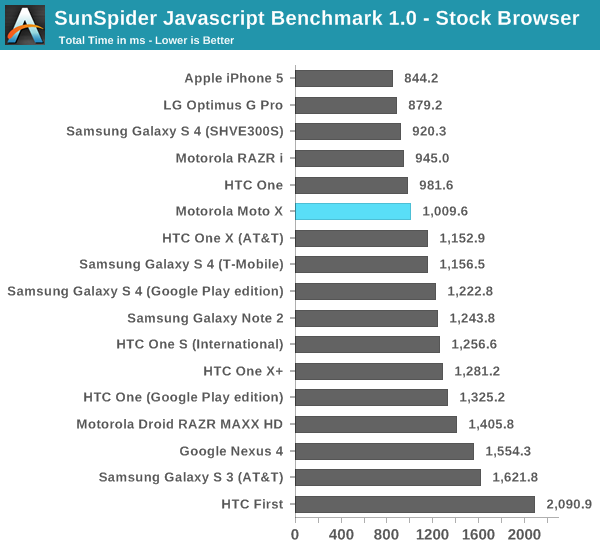
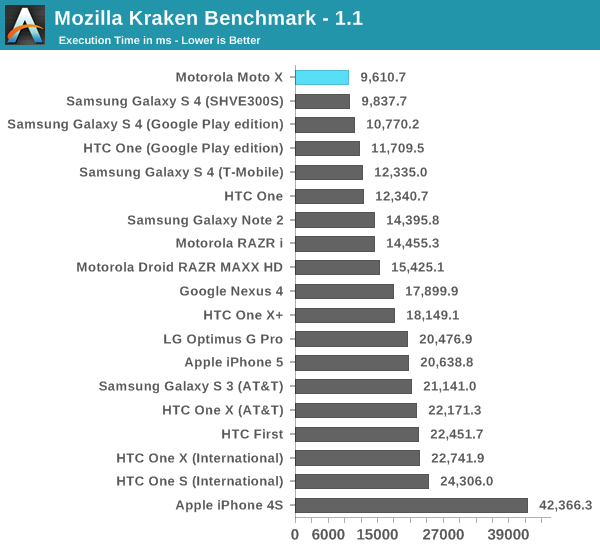
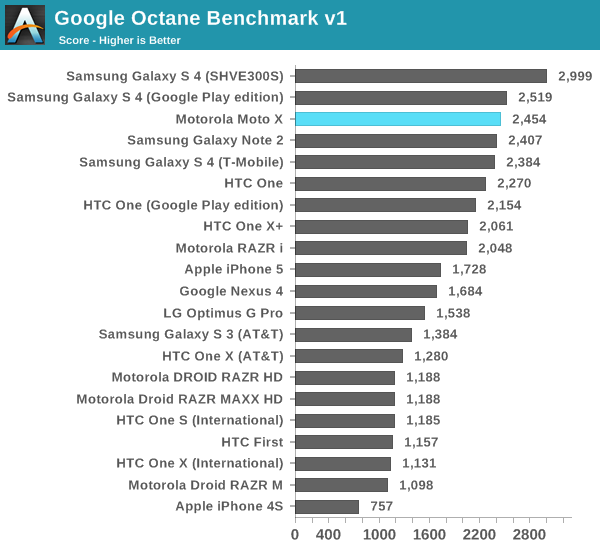
In our Nexus 7 review I pointed out that the SGS4’s 1.9GHz top frequency wasn’t consistently attainable. The end result was a smaller than expected difference in performance between its 1.9GHz Snapdragon 600 and the 1.5GHz Snapdragon 600 used in the Nexus 7. I wondered if something similar might be happening here with the Moto X.
To find out I profiled CPU frequency of each core on the Moto X and Galaxy S 4 while running Kraken and SunSpider:
Looking at the first core on the Moto X we see that it’s active almost all of the time, and almost always running at its top speed of 1.7GHz. The second core is also active but we see it regularly alternating between ~950MHz and 1.7GHz.
Now let’s look at the quad-core SGS4:
Max CPU frequency tops out at 1.9GHz, as it should, but it’s sustained for only a very short period of time. Instead we see the first core step down to 1.5GHz, then again to 1.25GHz before eventually settling down to around 1GHz. We see the same pattern on the SGS4’s second core.
Looking at the third and fourth cores we see why the first two cores are more frequency limited. There’s fairly regular use of the third core, which eats into the SoC’s overall TDP and seems to force clock speeds down of the first two cores. The fourth core gets less use but it also contributes to driving frequencies down across the board.
We see the same sort of behavior in SunSpider, with the Moto X regularly hitting 1.7GHz while the SGS4 has more active cores, running at lower overall frequencies.
The tradeoff is an interesting one. Single threaded performance tends to govern system responsiveness (at least within a given application) more than multithreaded performance. However, running one core at 1.7GHz will require a higher voltage than running four cores at closer to 1.2GHz. Depending on the workload, four cores running at lower frequencies/voltages could actually end up being more power efficient than running two cores at their max frequency/voltage.
I actually wonder if that might be why we see worse battery life on the Moto X in practice compared to the HTC One/SGS4. Heavier workloads that keep all four cores active, but not pegged, might actually run more efficiently on the quad-core Krait 300 platforms.
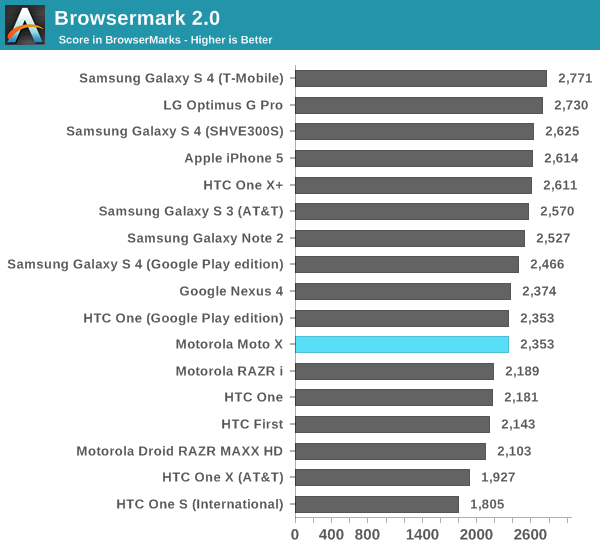
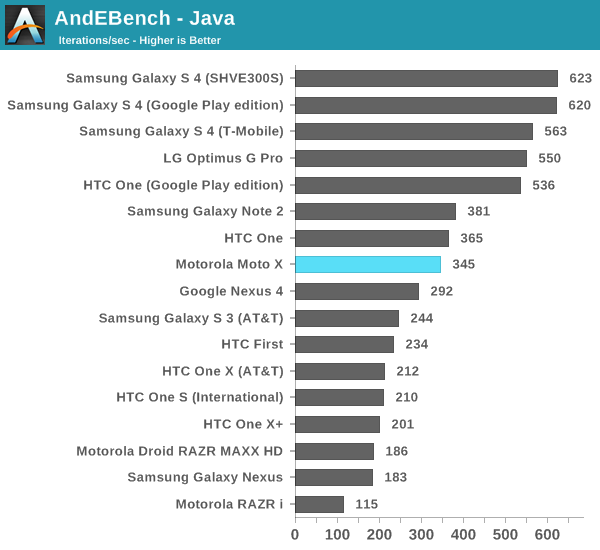
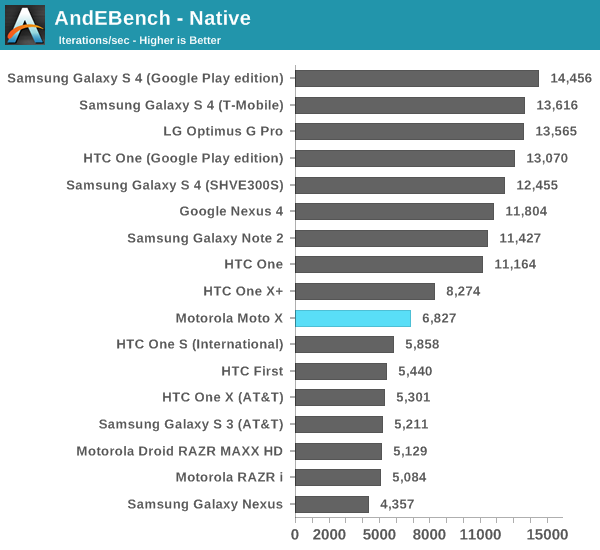
AndEBench includes a multithreaded component, which presents a different picture of the Moto X vs. the quad-core competition. In practice I find the Moto X’s performance is really quite good. Depending on your usage model you may or may not notice the difference between it and a quad-core offering because of the higher sustained one/two core frequencies. The downsides are potentially lower battery life as it typically takes a ton of voltage to run these cores at their max frequency, and the fact that Motorola doesn’t pass along any of the cost savings from going with a cheaper SoC/platform to the end user.

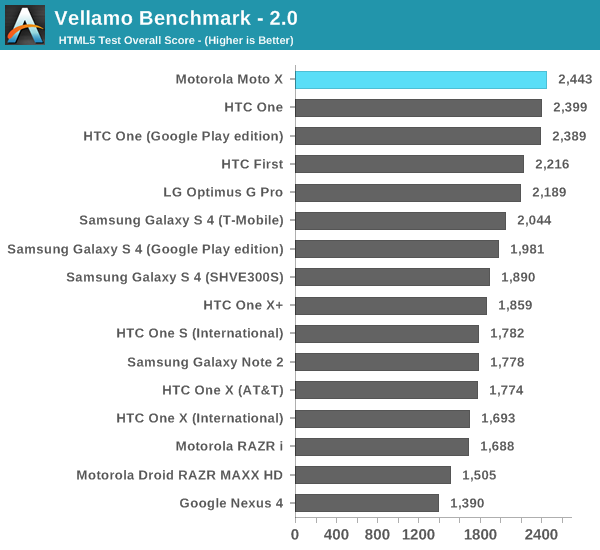


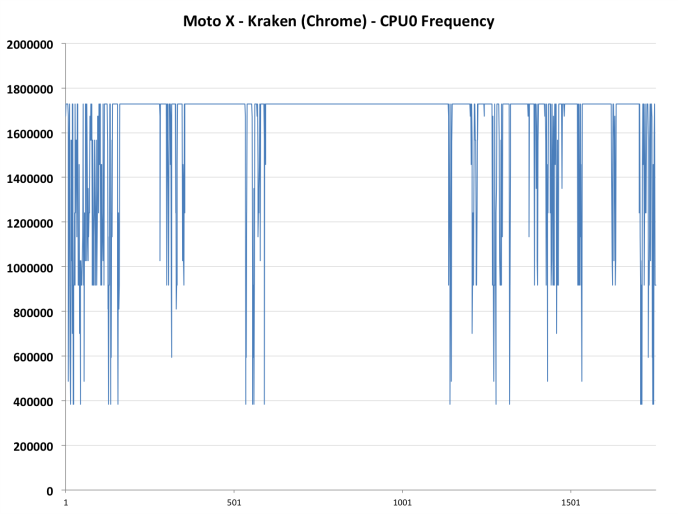
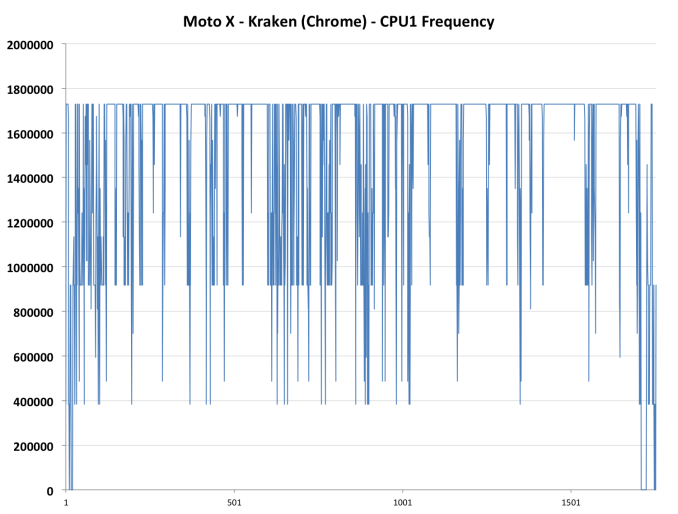
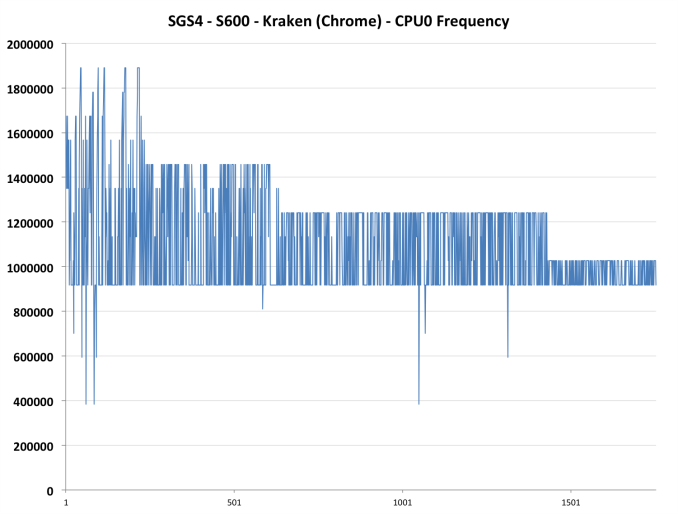

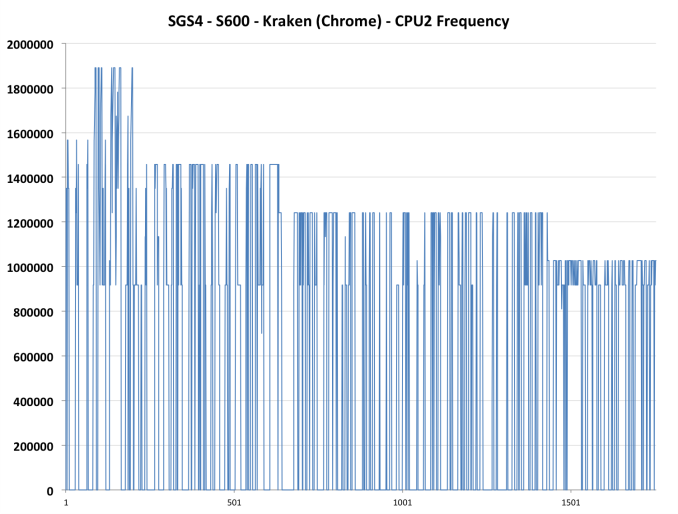
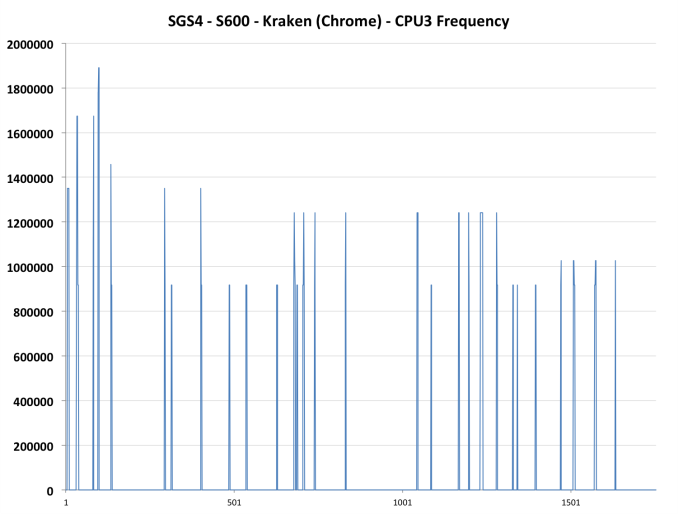
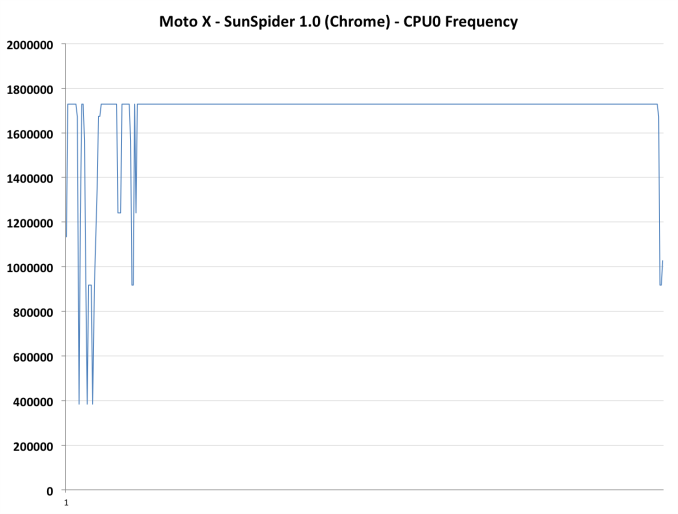

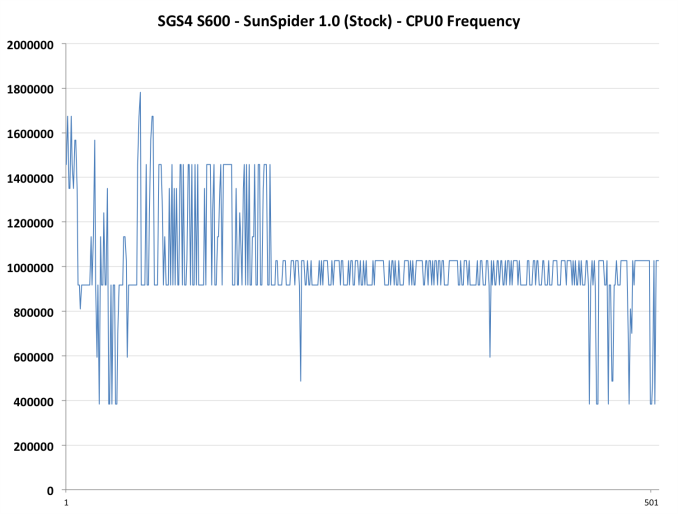

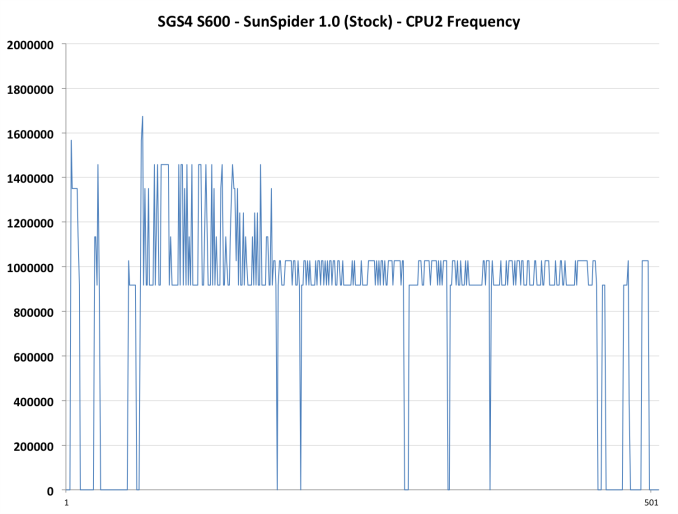
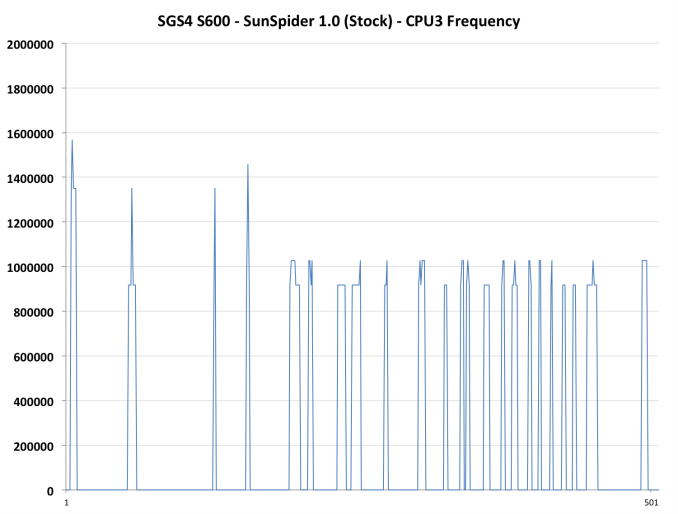








105 Comments
View All Comments
smitty123 - Monday, August 26, 2013 - link
" You have to also be close by, Moto X isn’t going to turn on when you’re across a big room, for example. In addition I’ve noticed that for some reason there are some odd false positives."i don't like to feel like my spied on.
So to me it just sounds like we have a new thing to test: the distance at which the phone can hear us.
Not hear the magic phrase, just how far from us it can still hear us with its 3 mics. forget the "it can't understand us" i'm not testing if it can recognize words, i'm just not comfortable knowing if it can record conversations that a human, nsa for example, can understand. with obama going for the warantless conversation recording, let's just say, this isn't a phone i'd want near me.
That old big brother spying thing is here, i think in the interest of privacy, we need to know these things before buying the phone.
i for one will never get an xbox one just for that reason.
good luck but i'm going back to good old rotary phones lol
flyingpants1 - Wednesday, September 18, 2013 - link
All phones can do that, genius.AnnonymousCoward - Tuesday, August 27, 2013 - link
Does the UI have lag between Android menu screens? Is the touch-screen at least as responsive as every Iphone to come out?I'm guessing there's still plenty of UI lag. In the future, UI's will be instant.
eallan - Tuesday, August 27, 2013 - link
It's pretty responsive, I've had some hiccups and frame rate drops though.Honest Accounting - Monday, September 16, 2013 - link
In the general UI or specific applications?Krysto - Tuesday, August 27, 2013 - link
Maybe it got offset by the last-gen AMOLED tech. Here's the thing. If you're going to argue for efficiency, then don't just use an "old panel". Obviously that won't help. You need to use the latest technologies, the most efficient ones, and THEN lower the resolution and the clock speed of the CPU and GPU.So let's say the latest AMOLED is 2x more efficient than the n-1 before it, at the same resolution. But at 1080p (2x more pixels) it uses just as much power compared to the 720p one. Then I want the latest AMOLED with 720p, to benefit from that improvement in efficiency. If I use the old one with 720p, or the new one with 1080p, then I won't see any improvement in battery life.
Same for the CPU and GPU. Let's say Motorola wanted to hit the performance target of S4 Pro, in both CPU and GPU. Great. But to gain extra efficiency, it would've been ideal to use the S800's CPU at 1.5/1.7 Ghz (instead of 2.3 Ghz), and Adreno 330 at half the clock speed (to match Adreno 320's performance).
That's how you get the extra efficiency. We don't really see new phones that are much better in power consumption than last year's models, because the OEM's keep pushing for performance or resolution or whatever, which completely cancels out whatever efficiency gains they might've had.
But this is our fault, too. Because we keep caring about benchmarks and who's e-penis is bigger, to the point where the OEM's have the incentive to cheat on these benchmarks, to get good PR from it.
If we really want to see better battery life, then act like you don't care about performance anymore (because it has gotten good enough anyway), and ask for 2-day battery life (then heavy users might finally get a full day).
Impulses - Tuesday, August 27, 2013 - link
The whole efficiency line on Motorla's part is probably half marketing spin anyway, I'm sure cost and logistics played as large a role into the component selection as efficiency, even features (the active display stuff would've been impossible w/more common LCD displays, etc). At the end of the day, the only phones that have made monumental battery life strides have been their MAXX editions, by just packing a much larger battery... It seems current gen phones often catch up to last gen MAXX phones in one or two tests tho.If they were really trying to go for battery life above all they'd not only sacrifice some performance but some device thickness, and introduce a phone w/a MAXX-like battery as the only SKU w/no smaller battery model below it. I'm surprised more OEMs aren't putting out slightly thicker phones at times w/3,000mAh batteries like Moto, like not even one OEM has...
michaelljones - Tuesday, August 27, 2013 - link
Brian, Anand,I know I'm commenting awfully low in this list to get seen, but I'd like to see a little more love for Windows phone in some of your comparison graphs. Throw in at least a token Lumia please (or more if you like!)?
I'm a happy Windows Phone user (like many I think), but I have no way to quantitatively compare my Lumia 928 to any of the other handsets. With cameras that kick ass, I can't see how they aren't a comparable discussion.
teiglin - Tuesday, August 27, 2013 - link
Two Lumias feature prominently in the camera section, and more are in the full gallery of camera comparison shots. I mean, yeah, Brian clearly knows that Nokia kicks everyone else's cameras in the nuts, and it shows.Beyond that, where do you want to see the Lumias? I don't think Brian ever got a working Windows Phone battery life test because of screen timeout issues (not to mention the absence of precision brightness controls makes it hard to compare to controlled 200 nit settings), so that leaves javascript benchmarks and display quality. I guess those would be nice to see in the appropriate charts.
michaelljones - Tuesday, August 27, 2013 - link
No mention on the screen page of any other Lumia devices and their types or quality of screens, only a host of Androids and a Apple. No CALMAN data.No speaker phone comparisons. The 928 Nokia crows all about the speaker phone for crying out loud. I want to know if it's really that good or if it really sucks that bad comparatively speaking.
No call time and battery tests. The call time is an open freakin phone call for crying out loud. I could have done that on my StarTac in 1997. Also no charge time comparison, despite the fact that there are a half dozen apps in the Windows Store that will measure this.
I believe several of the tests used in the CPU test are browser tests, and run just fine on a Lumia.
Last I knew GFXBench ran on Windows Phone, yet it's nowhere to be seen in the graphs. (maybe it's pathetic, but at least show it). http://gfxbench.com/result.jsp?site=dx
The camera section DOES have some pics from the Lumias, but fails to mention anything about them in the discussion, nor mention that Brian has them and that reviews are coming, etc. etc. other than an oblique reference to how he likes having access to the controls of the camera ala Lumia 1020. (and no mention of how the 1020 mops everything in the photo comparison as has been widely crowed with every other smart ass smart phone before this i.e. iPhone 5). Also no mention if those 1020 pictures are full 45MP or cropped ones.
I'm not asking for a chart that takes away from the phone in question by any means. I'm just asking for a fair and balanced view of the current Windows Phone offering(s) comparatively speaking. WP has it's own benefits and it's own downfalls, and I'd like to see them compared to others in an honest way.
See http://www.notebookcheck.com/Test-Nokia-Lumia-925-... as an example (granted it's in German, but the charts prove my point that these comparos could be a bit more balanced and not 9 Android phones against 1 iPhone and NO Windows Phone)